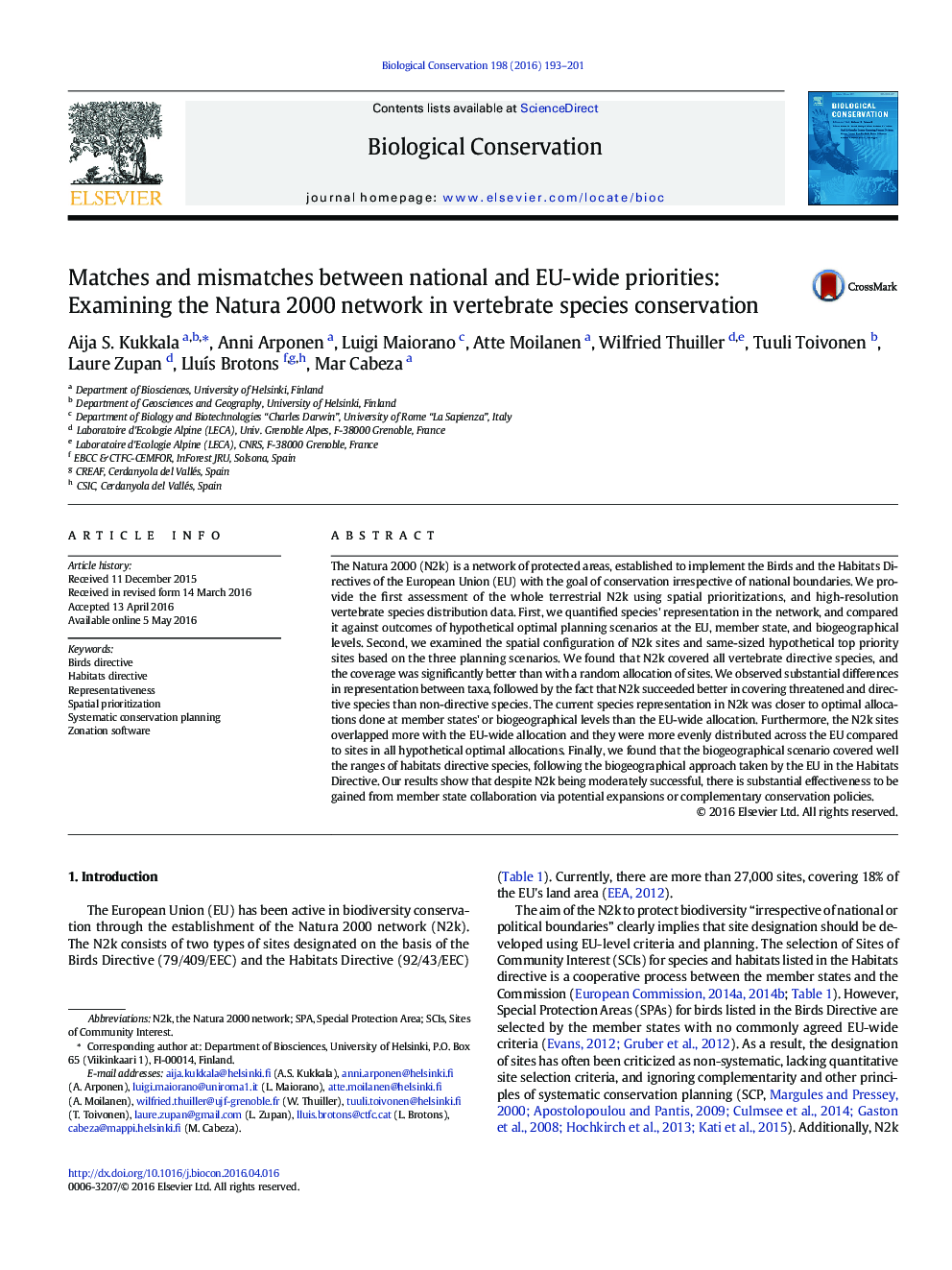| کد مقاله | کد نشریه | سال انتشار | مقاله انگلیسی | نسخه تمام متن |
|---|---|---|---|---|
| 4385026 | 1617903 | 2016 | 9 صفحه PDF | دانلود رایگان |
• We assess the terrestrial Natura 2000 (N2k) network by spatial prioritizations.
• N2k covers on average 33.6% of the ranges of vertebrate directive species.
• N2k covers less of directive species' ranges than optimal allocation at the EU level.
• Species representation in N2k reflects optimal allocation done at member state level.
• N2k, EU-wide and national spatial priorities for vertebrates coincide only partially.
The Natura 2000 (N2k) is a network of protected areas, established to implement the Birds and the Habitats Directives of the European Union (EU) with the goal of conservation irrespective of national boundaries. We provide the first assessment of the whole terrestrial N2k using spatial prioritizations, and high-resolution vertebrate species distribution data. First, we quantified species' representation in the network, and compared it against outcomes of hypothetical optimal planning scenarios at the EU, member state, and biogeographical levels. Second, we examined the spatial configuration of N2k sites and same-sized hypothetical top priority sites based on the three planning scenarios. We found that N2k covered all vertebrate directive species, and the coverage was significantly better than with a random allocation of sites. We observed substantial differences in representation between taxa, followed by the fact that N2k succeeded better in covering threatened and directive species than non-directive species. The current species representation in N2k was closer to optimal allocations done at member states' or biogeographical levels than the EU-wide allocation. Furthermore, the N2k sites overlapped more with the EU-wide allocation and they were more evenly distributed across the EU compared to sites in all hypothetical optimal allocations. Finally, we found that the biogeographical scenario covered well the ranges of habitats directive species, following the biogeographical approach taken by the EU in the Habitats Directive. Our results show that despite N2k being moderately successful, there is substantial effectiveness to be gained from member state collaboration via potential expansions or complementary conservation policies.
Journal: Biological Conservation - Volume 198, June 2016, Pages 193–201
